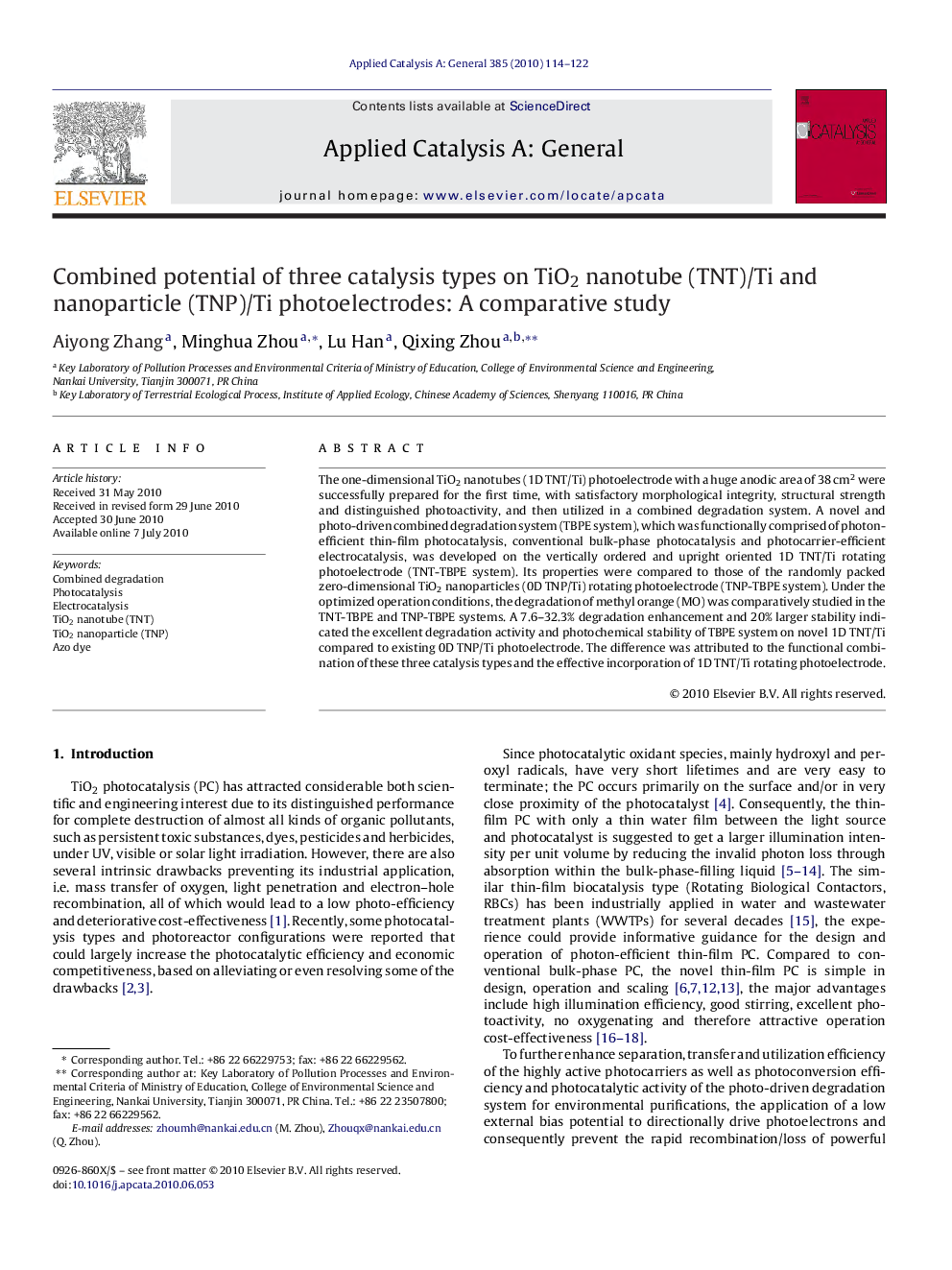| Article ID | Journal | Published Year | Pages | File Type |
|---|---|---|---|---|
| 41974 | Applied Catalysis A: General | 2010 | 9 Pages |
The one-dimensional TiO2 nanotubes (1D TNT/Ti) photoelectrode with a huge anodic area of 38 cm2 were successfully prepared for the first time, with satisfactory morphological integrity, structural strength and distinguished photoactivity, and then utilized in a combined degradation system. A novel and photo-driven combined degradation system (TBPE system), which was functionally comprised of photon-efficient thin-film photocatalysis, conventional bulk-phase photocatalysis and photocarrier-efficient electrocatalysis, was developed on the vertically ordered and upright oriented 1D TNT/Ti rotating photoelectrode (TNT-TBPE system). Its properties were compared to those of the randomly packed zero-dimensional TiO2 nanoparticles (0D TNP/Ti) rotating photoelectrode (TNP-TBPE system). Under the optimized operation conditions, the degradation of methyl orange (MO) was comparatively studied in the TNT-TBPE and TNP-TBPE systems. A 7.6–32.3% degradation enhancement and 20% larger stability indicated the excellent degradation activity and photochemical stability of TBPE system on novel 1D TNT/Ti compared to existing 0D TNP/Ti photoelectrode. The difference was attributed to the functional combination of these three catalysis types and the effective incorporation of 1D TNT/Ti rotating photoelectrode.
Graphical abstractFigure optionsDownload full-size imageDownload high-quality image (88 K)Download as PowerPoint slideResearch highlights▶ 1D TiO2 nanotubes photoelectrode with huge area (38 cm2) was successfully prepared. ▶ Effective incorporation of 1D TNT/Ti in rotating photoelectrocatalysis system. ▶ Novel degradation involved thin-film, bulk-phase photocatalysis and electrocatalysis. ▶ Excellent degradation activity and stability on 1D TNT/Ti compared to 0D TNP/Ti.
